



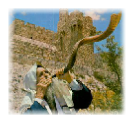


Sukkot is the third most important of the pilgrimage festivals, coming after the Passover and Shavu’ot.
It commemorates the Israelite wanderings in the desert for 40 years following their exodus from the
land of Egypt.
During this time the nation of Israel lived in tents, the Jews call them ‘booths’. Sukkot means ‘booths’.
Therefore this festival is often called the feast of booths. Some would call it the feast of tabernacles, but this can be misleading as G-D’s Temple whilst the Israelites were in the desert was called the Tabernacle.
Sukkot lasts for seven days and during this period the Jewish people are commanded by God to live
In these ‘temporary tents’ as a reminder of their wanderings in the wilderness.
`So beginning with the fifteenth day of the seventh month, after you have gathered the crops
of the land, celebrate the festival to the LORD for seven days; the first day is a day of rest, and the eighth day also is a day of rest. On the first day you are to take choice fruit from the trees, and palm fronds, leafy branches and poplars, and rejoice before the LORD your God for
seven days. Celebrate this as a festival to the LORD for seven days each year. This is to be a lasting ordinance for the generations to come; celebrate it in the seventh month.
Live in booths for seven days: All native-born Israelites are to live in booths so your
descendants will know that I had the Israelites live in booths when I brought them out of Egypt.
I am the LORD your God.' " (Leviticus 23 v 39-43 NIV)
No work is permitted on the first and second days of this festival, even though G-D only instituted the
first day.
As well as commemorating the wandering in the wilderness, this festival has an agricultural aspect
to it as well, as this feast also celebrates the gathering in of the harvest and therefore may also be
called the Festival of Ingathering.
Also during Sukkot the Israelites observe the ‘four species’ (arba minim). This is the taking of the
four plants that G-D specified and they use them to rejoice before the LORD.
these plants are the Palm branch, the willow branch, the myrtle and the etrog ( a citrus fruit, usually a
lemon). Taking one palm branch, 2 willow and 3 myrtle branches, they bind them together (collectively
called the Lulav) and they wave them in 6 directions (up and down and the 4 compass points) to show that
G-D is all around, during this time a blessing is said.
Sukkot
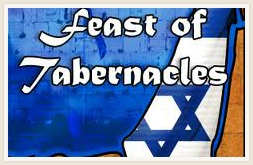
After Passover, Shavu’ot is the second of the three most important festivals, it is important because
of its history as it celebrates the giving of the Law (The Torah) to Moses on Mount Sinai, and also
in terms of harvest as it is the time of the harvest of the first fruits and the offering of these to G-D
in the temple.
Shavu’ot follows 49 days or 7 weeks after Passover (counting of days starts from the second day of
The Passover) and is celebrated on the 50th day. The counting of these days is known as the
counting of the Omer.
Shavu’ot is the time for remembering that the Jewish nation were redeemed spiritually from their
bondage to idolatry and immorality.
It is celebrated because G-D commanded it in the book of Leviticus:
Shavu’ot
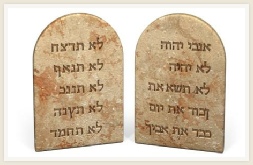
The Passover is probably the most important Jewish celebration and certainly the oldest. It was
instigated at G-D’s command by Moses just before the Israelites were to leave the land of Egypt for the
Promised land. When G-D sent the plagues on the Egyptians, the last plague was the killing of all the
firstborn, both human and animal. The Israelites were instructed to take a lamb, without defect, kill it and
sprinkle the blood on the doorposts and lintel of the door of their houses. When the Angel of the Lord saw
the blood he ‘passed over’ and the firstborn in the house were safe. If there was no blood the firstborn
would die.
The Passover festival lasts for eight days, and in preparation for the Passover the whole house has to
be swept clean and all yeast has to be removed. Today, lambs are not killed and the doorposts
sprinkled with blood, but a seder meal and the remembrance of that first Passover is retold. It starts
with one of the children in the household asking the question “Why is this night different from all other
nights”
The seder plate contains the following symbolic foods which remind the Jewish people of the past but
Also look forward to the future:
Haroseth - a mixture of chopped walnuts, wine, cinnamon and apples. Represents the mortar the
Slaves used to make Pharaoh’s bricks.
Parsley - Symbolises springtime, dipped in salt water to remind of the tears of the slaves.
Egg - Another sign of spring
Shankbone - symbolic of the sacrificial lamb offering, the bone can come from whatever is being
Eaten by the family, e.g. Could be turkey.
Bitter herbs - freshly grated horseradish, reflects the bitter affliction of slavery.
During this feast 5 glasses of wine are poured out, the first represents freedom, the second, deliverance.
The third, redemption, the fourth, release and the fifth is the cup of Elijah, an offering for the prophet.
During the seder the door of the house is opened to invite Elijah in.
The seder meal usually ends in a toast - “Next year in Jerusalem”.
Passover
Each is divinely established by G-d
Israel’s festivals and feasts
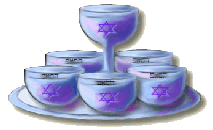
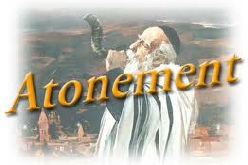
Yom Kippur